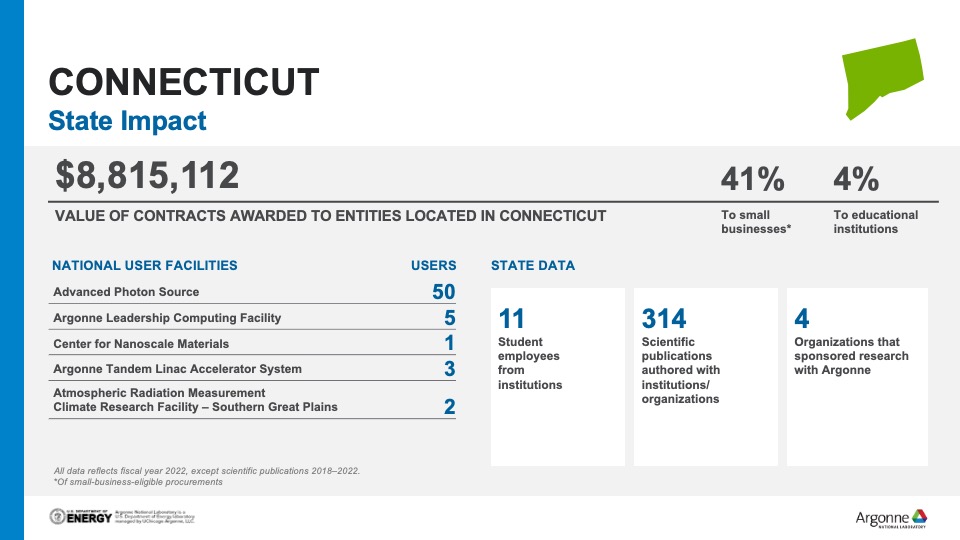Yale researchers use Advanced Photon Source synchrotron to solve ‘monster’ mystery
Paleontologists at Yale University (New Haven, Connecticut) used a beamline at the Advanced Photon Source (APS), located at the U.S. Department of Energy’s (DOE) Argonne National Laboratory, to help classify an extinct, 300-million-year-old sea creature known as the Tully Monster. The creature had eyes that jutted out from the ends of stalks, and an extended claw where a mouth typically would be. Discovered in 1958 by amateur fossil hunter Francis Tully, the creature had eluded scientific classification for decades.
Researchers used fossils from Chicago’s Field Museum of Natural History, where Tully had donated his findings, to advance their analysis. Using a technique known as synchrotron elemental mapping — which reveals physical features by mapping a fossil’s chemistry — they analyzed vertebrate and invertebrate fossils from the same Illinois beds where Tully Monster fossils are found. Scientists were able to identify the creature as a vertebrate with gills and a primitive backbone. They believe the Tully Monster is part of the same lineage as the lamprey.
The APS is a DOE Office of Science User Facility.
Argonne to collaborate with Raytheon Technologies to accelerate aircraft engine design
Using high-performance computing, scientists at the Raytheon Technologies Research Center (East Hartford, Connecticut) and Argonne are working to improve coolant flow mixing and heat transfer in aircraft engines.
As fuel is burned, temperatures reach extremely high levels, necessitating thermal management strategies to prevent damage to aircraft components. At the thin boundary layers near the walls of an aircraft turbine and combustor, the interaction between cooling air and hot gases creates an environment that scientists are studying to ensure better design and greater durability of engine components.
Using supercomputers at Argonne’s Leadership Computing Facility (a DOE Office of Science User Facility), the team is performing simulations to generate high-fidelity data that can be leveraged to develop reduced-order deep learning models that predict near-wall heat transfer at a fractional cost of high-fidelity simulations. This has the potential to reduce the cost and time-to-design of thermal management systems to minimize cooling air flow requirements and increase the energy efficiency of modern gas turbine engines.
Yale, APS create new materials from subatomic elements
Using X-ray beamlines at the APS, Yale scientists are pioneering the landscape of picoscience, the process of tailoring new materials at the picometer scale — that is, one-thousandth of nanoscale. Such new materials hold promise for advances in technology that could transform everyday life.
A team led by physicists Charles Ahn, Frederick Walker, Sohrab Ismail-Beigi and Sangjae Lee created an artificial crystal consisting of lanthanum, titanium, cobalt and oxygen by layering elements one atomic plane at a time. The layering changes the material’s structure, electronic configuration and magnetic properties. Such new crystals, it is thought, can lead to new magnetic materials. Using one APS beamline, scientists conducted X-ray absorption and other measurements to understand the crystal’s electronic and magnetic properties. At another beamline, they used high-resolution synchrotron X-ray diffraction to measure crystal truncation rods to create a picture of the atomic structure.
Additional project collaborators include scientists from New York’s Flatiron Institute and Brookhaven National Laboratory.



